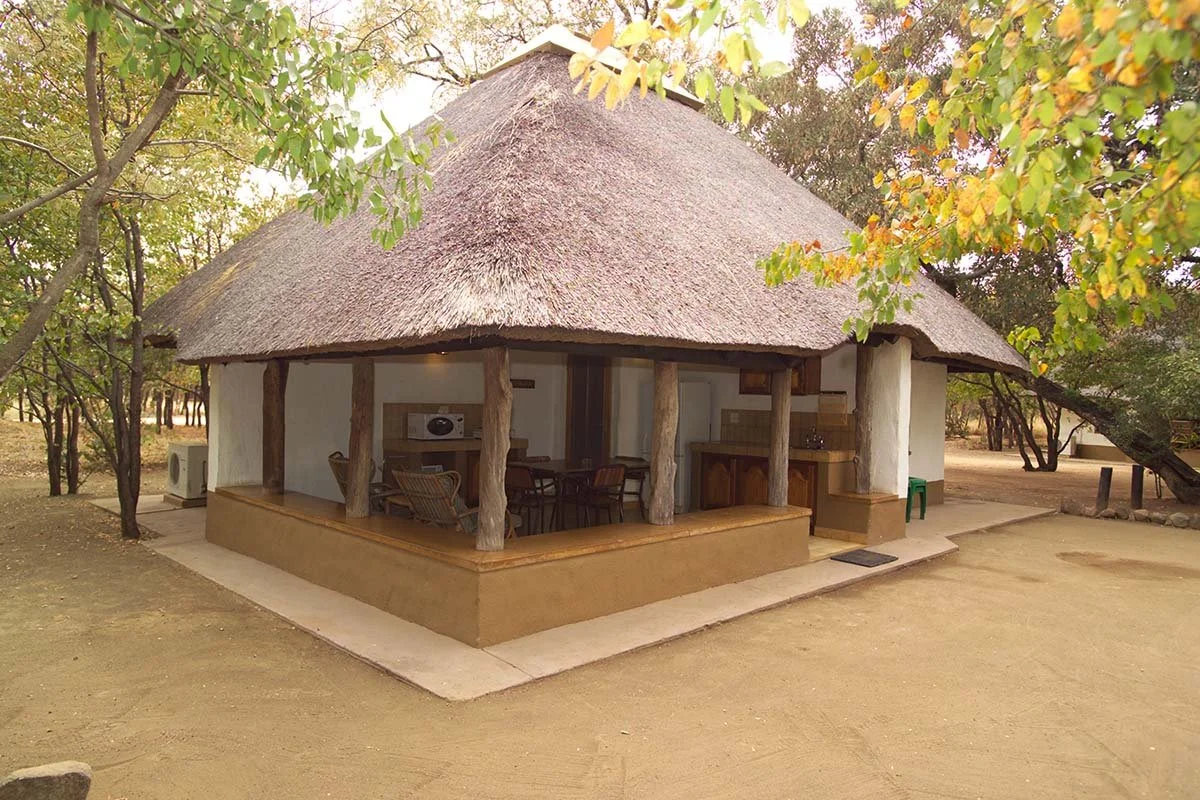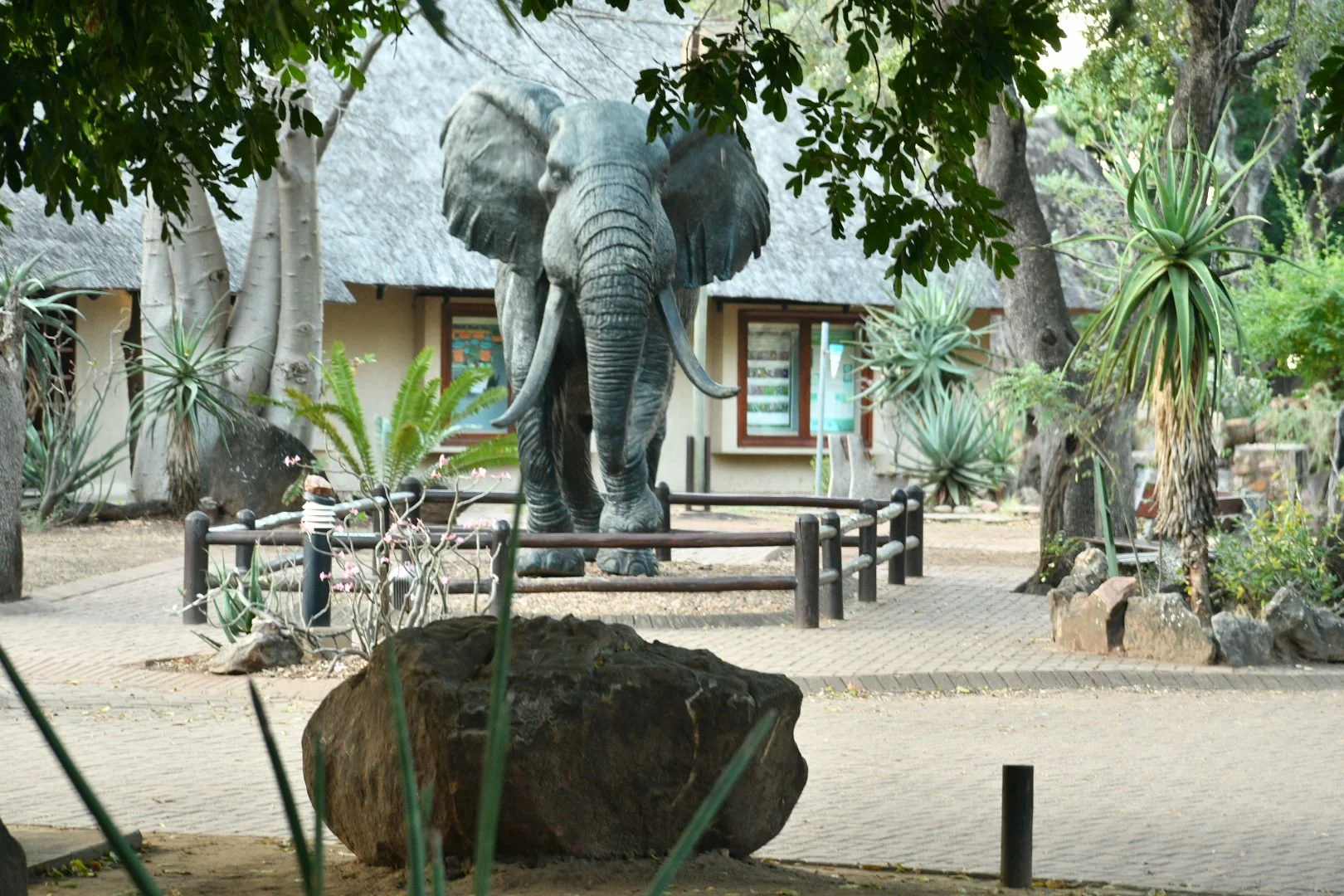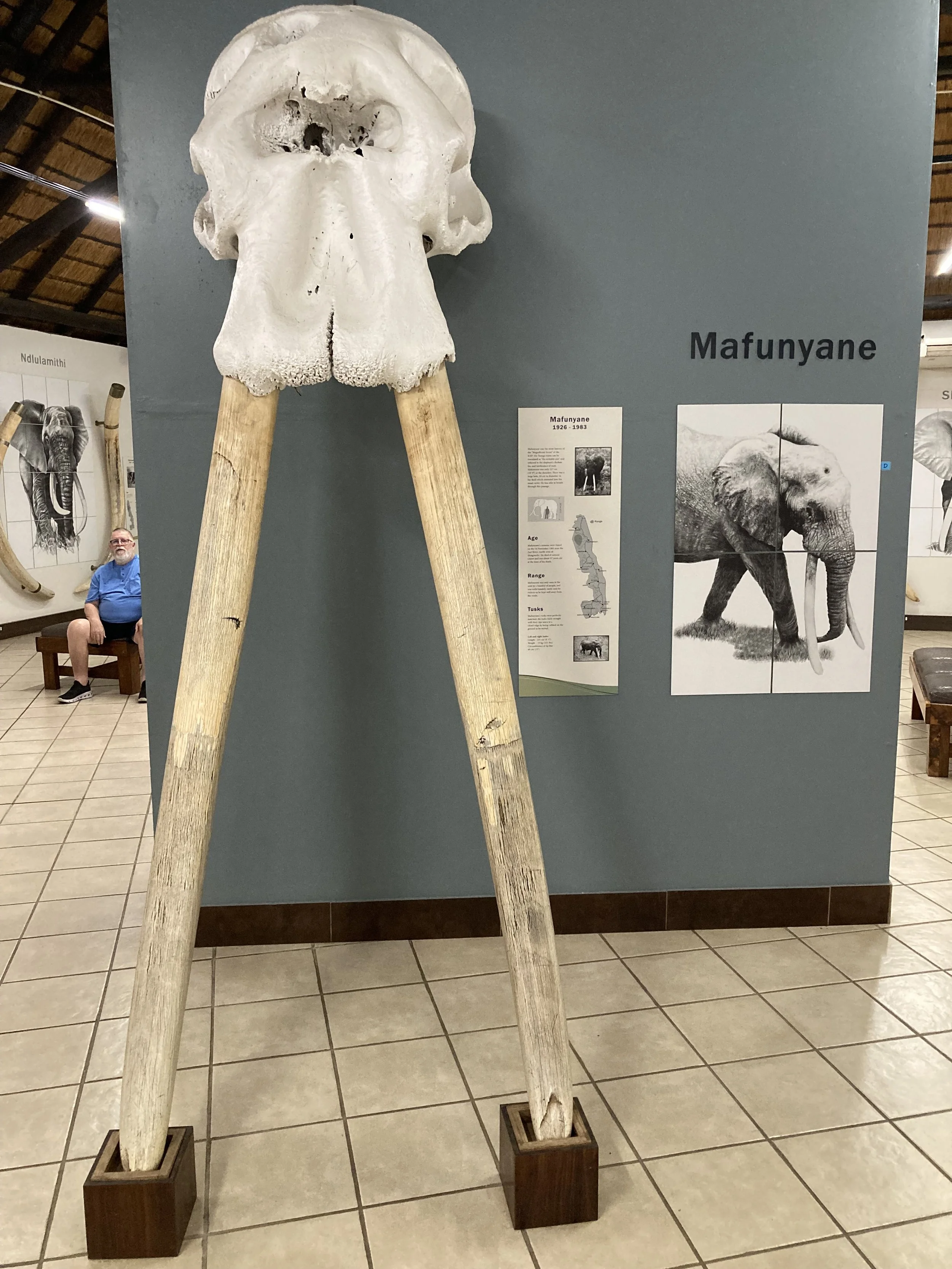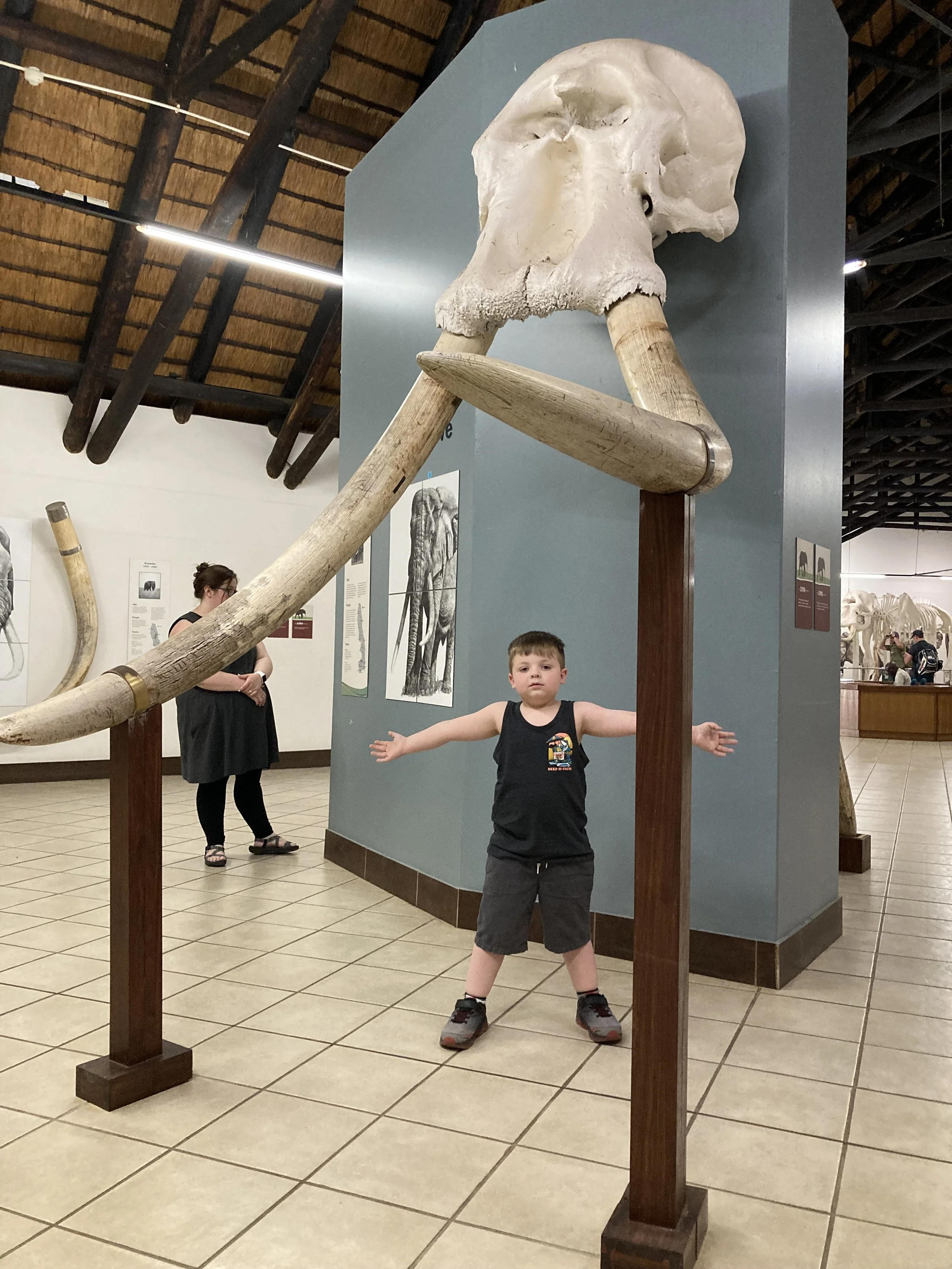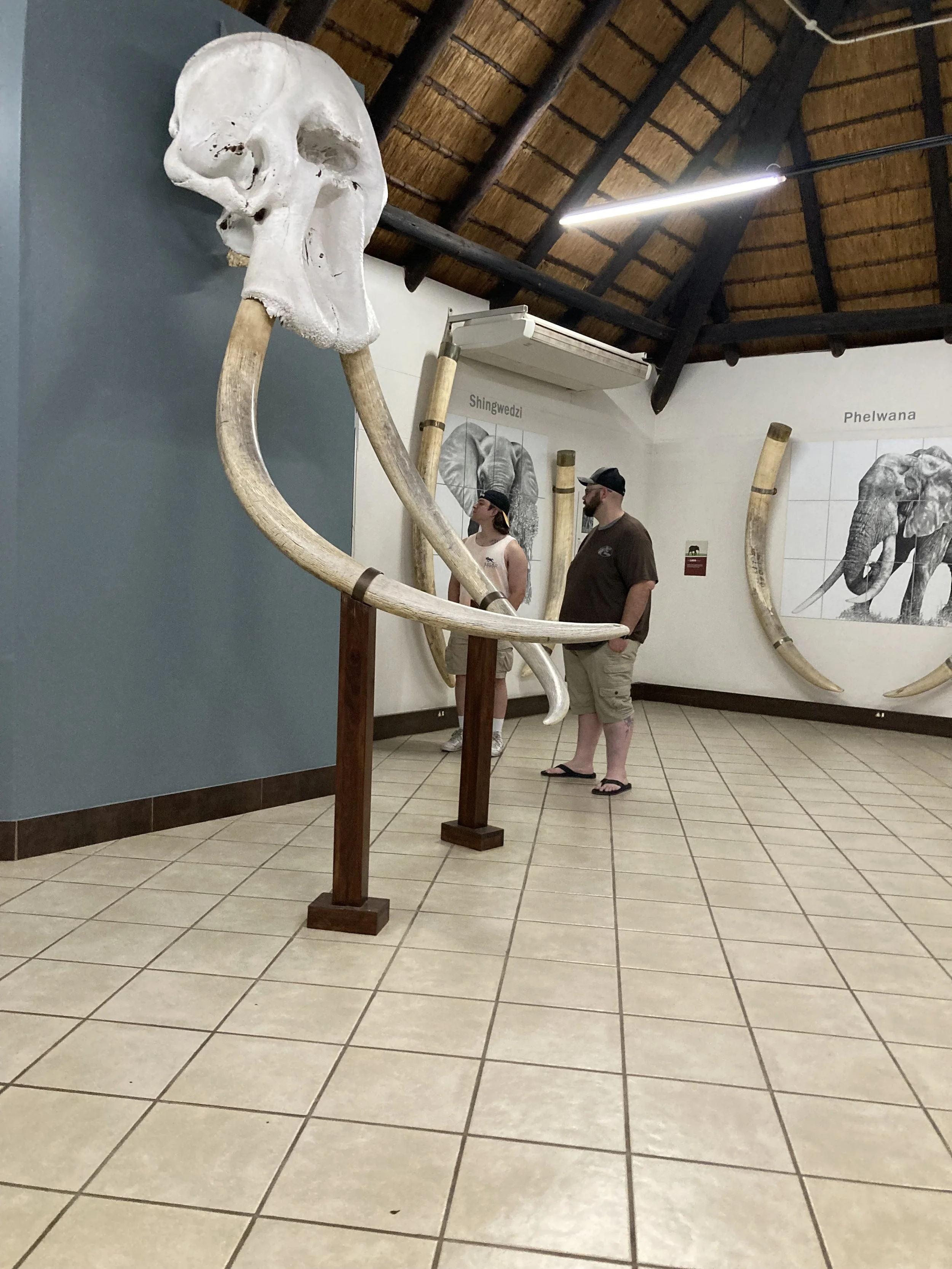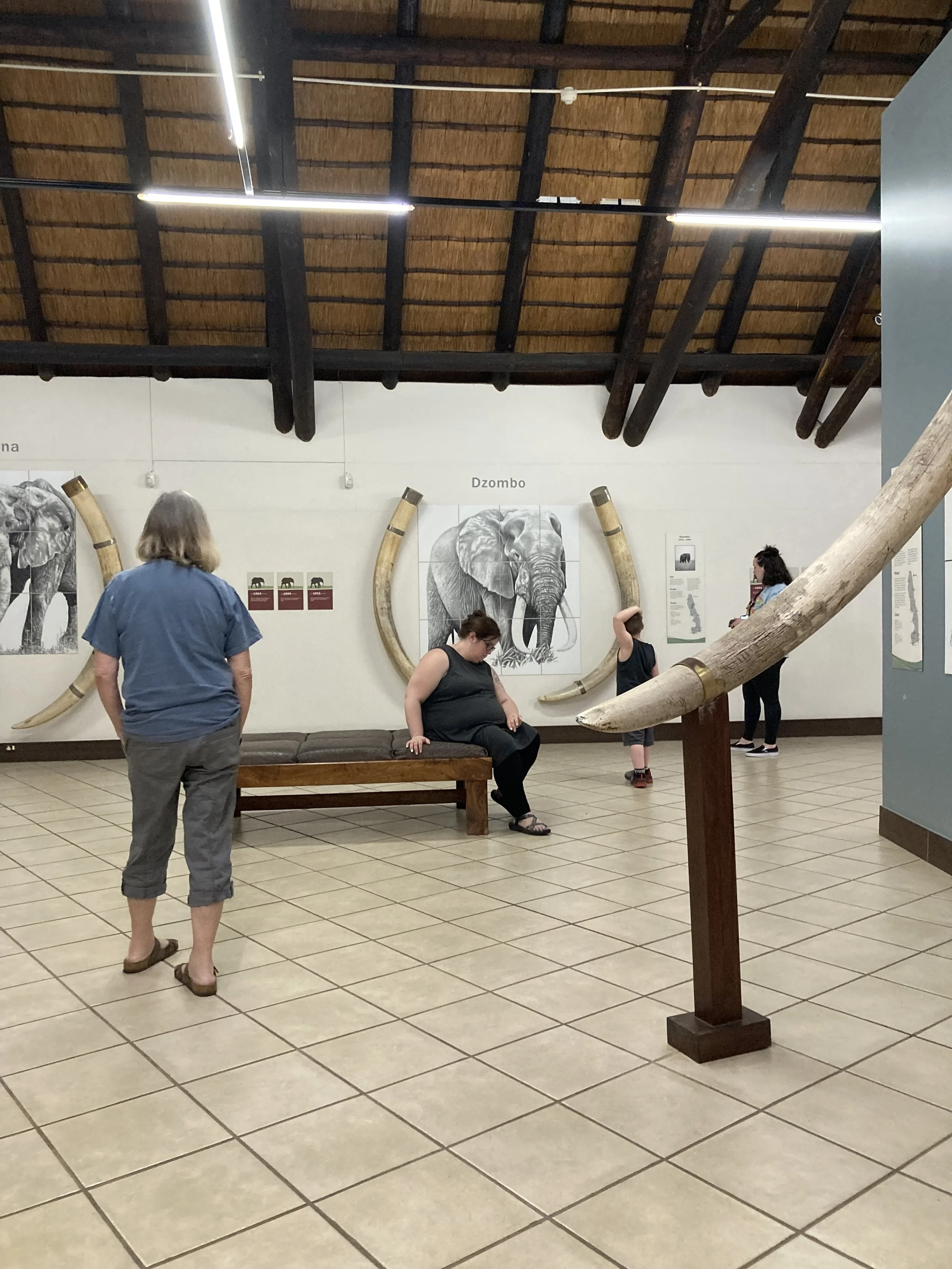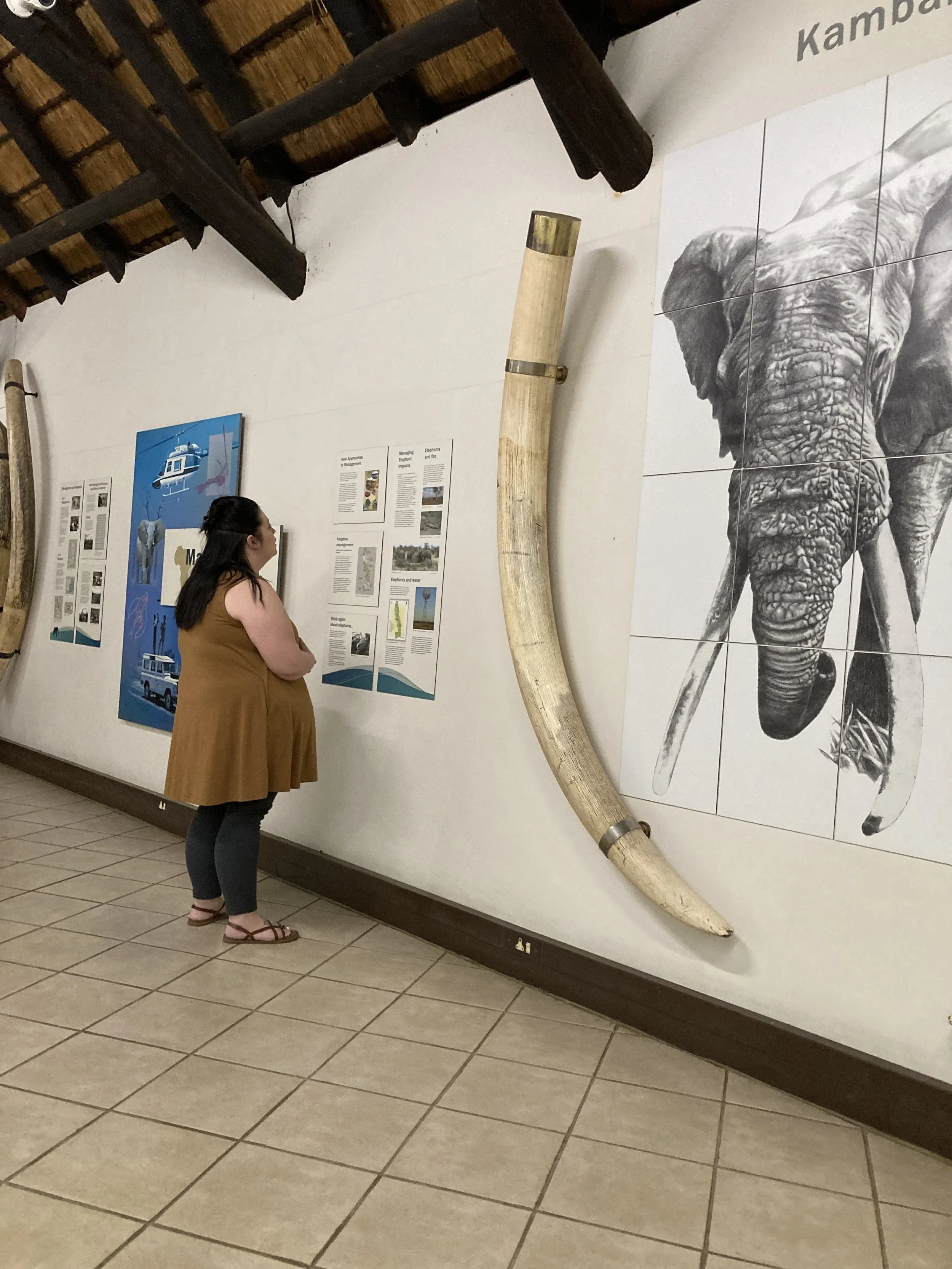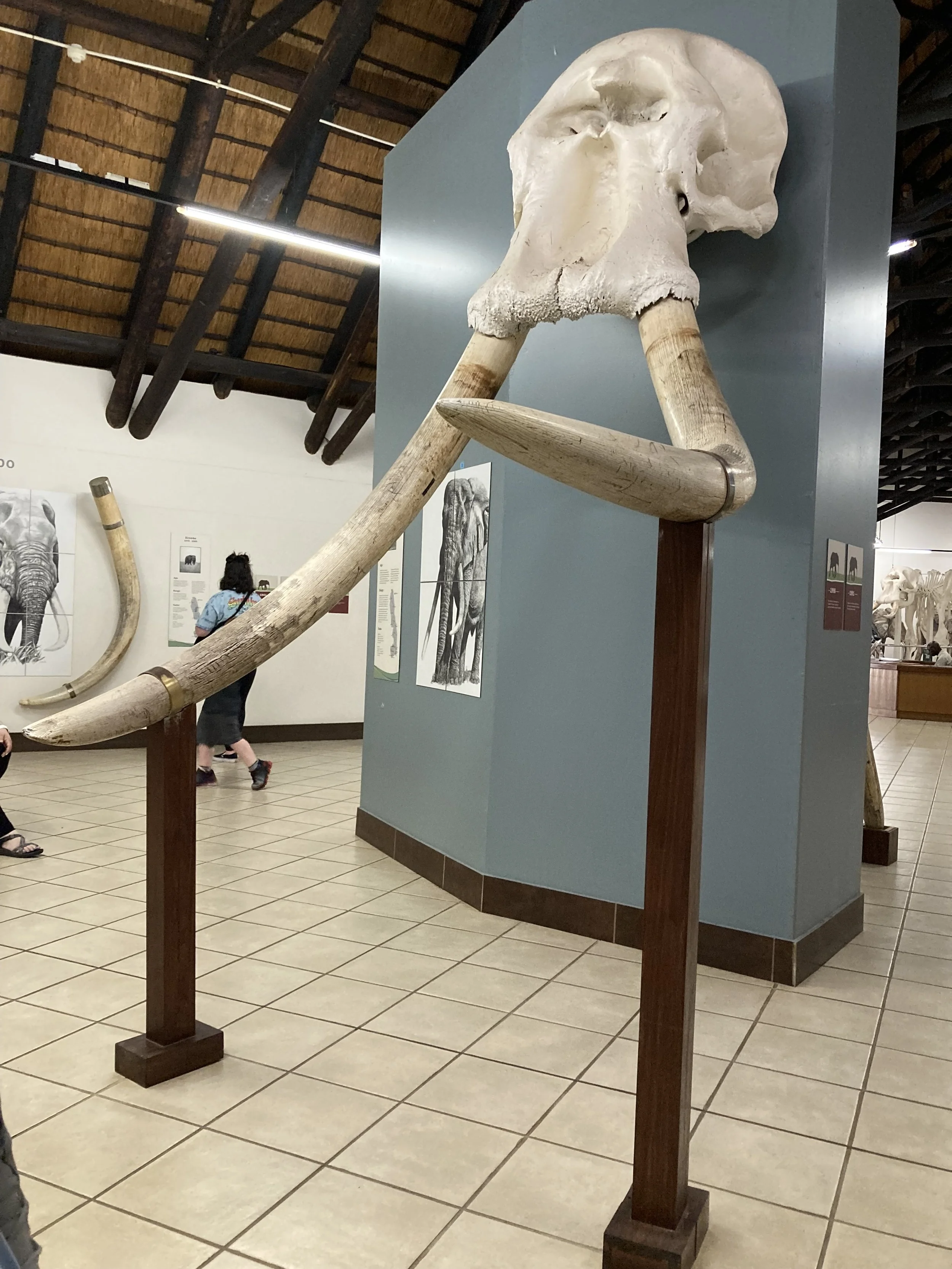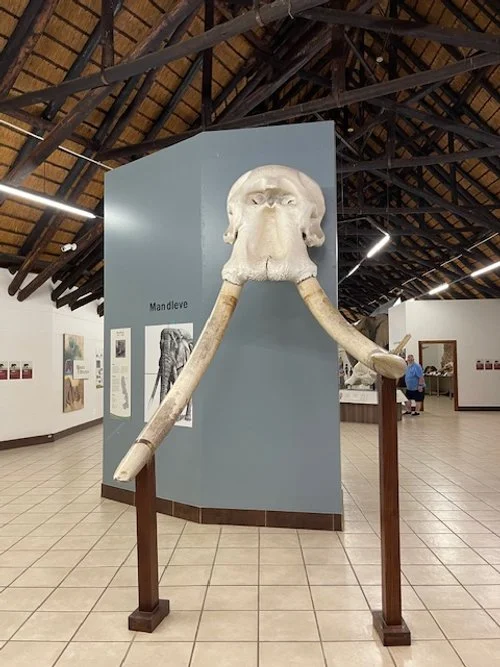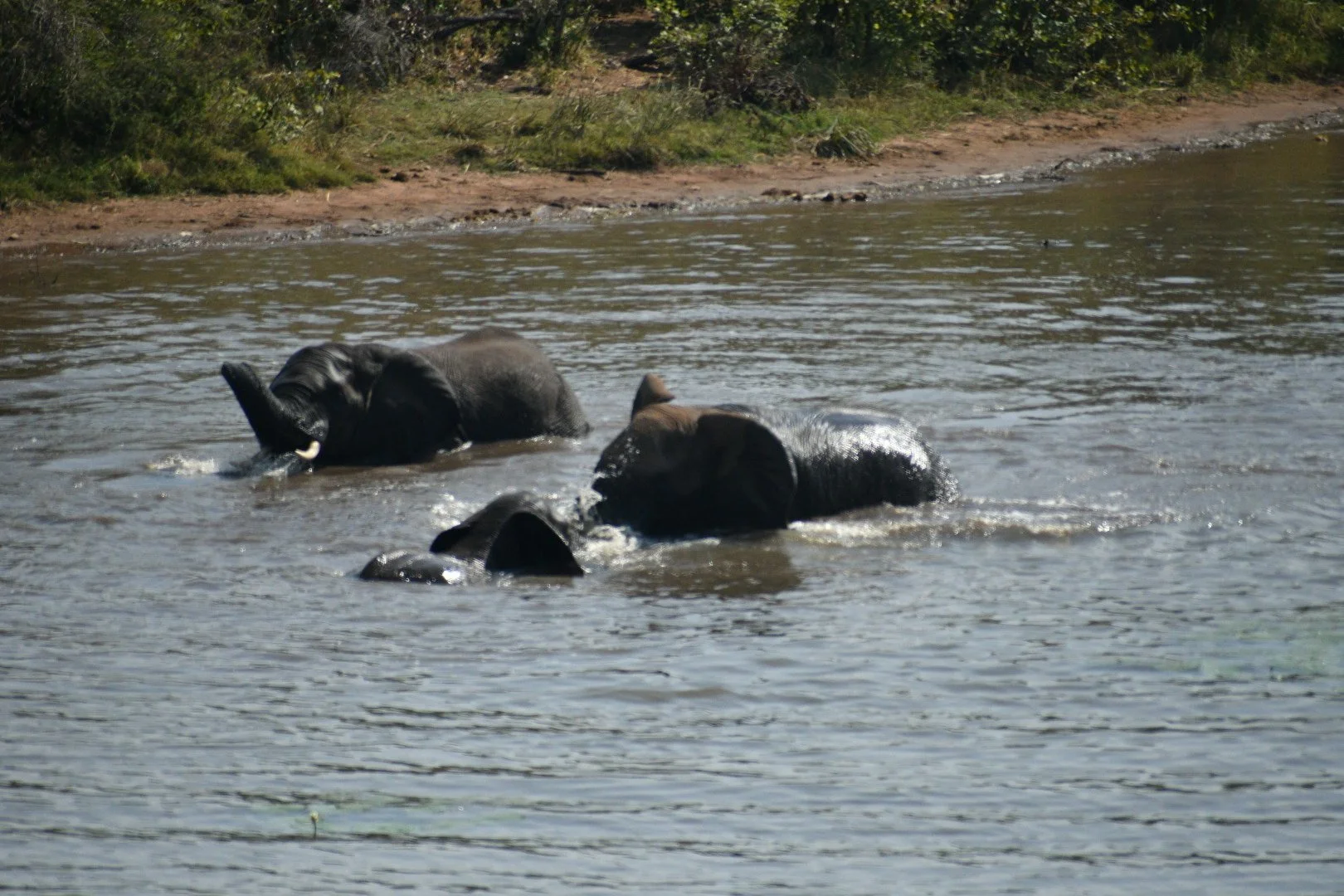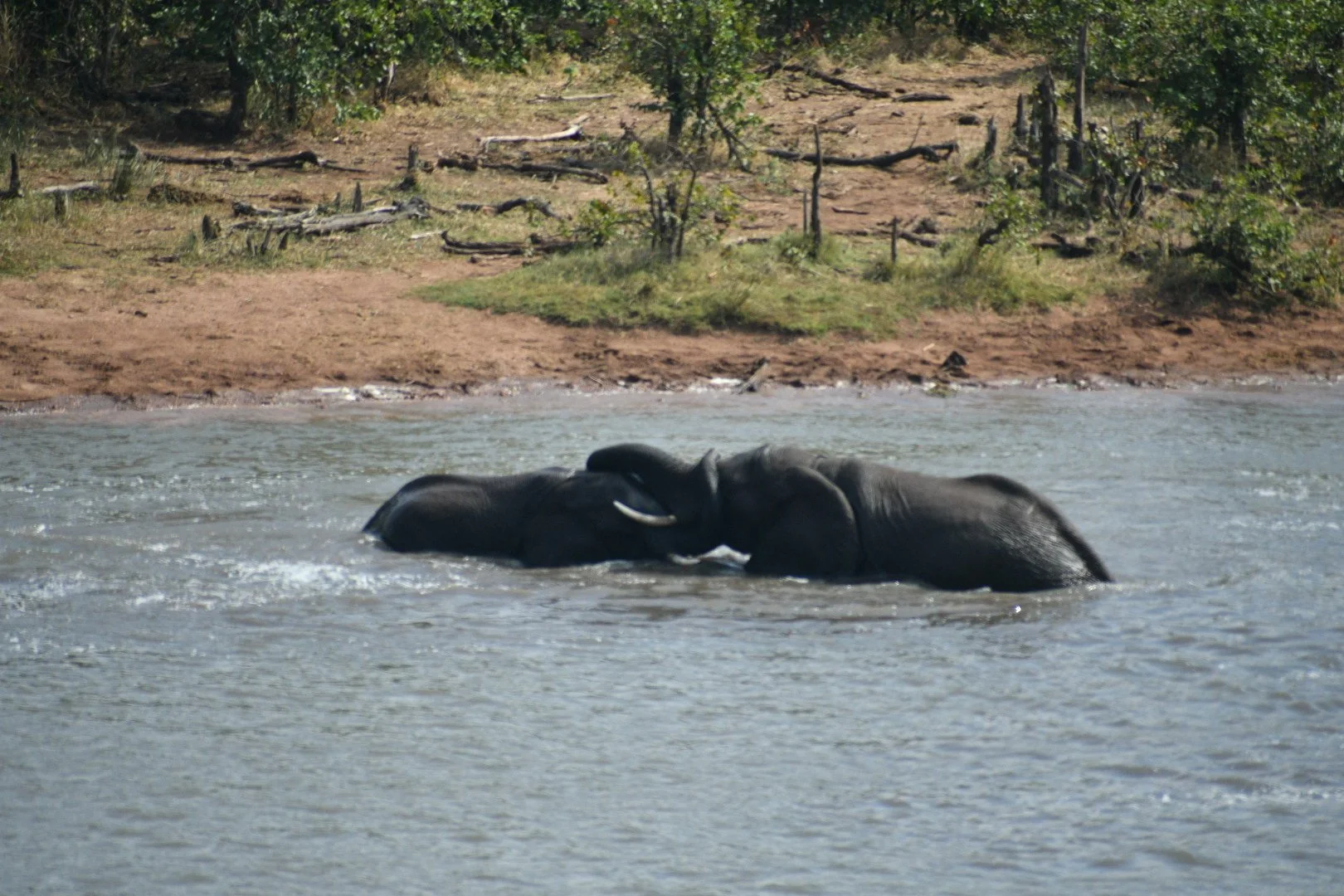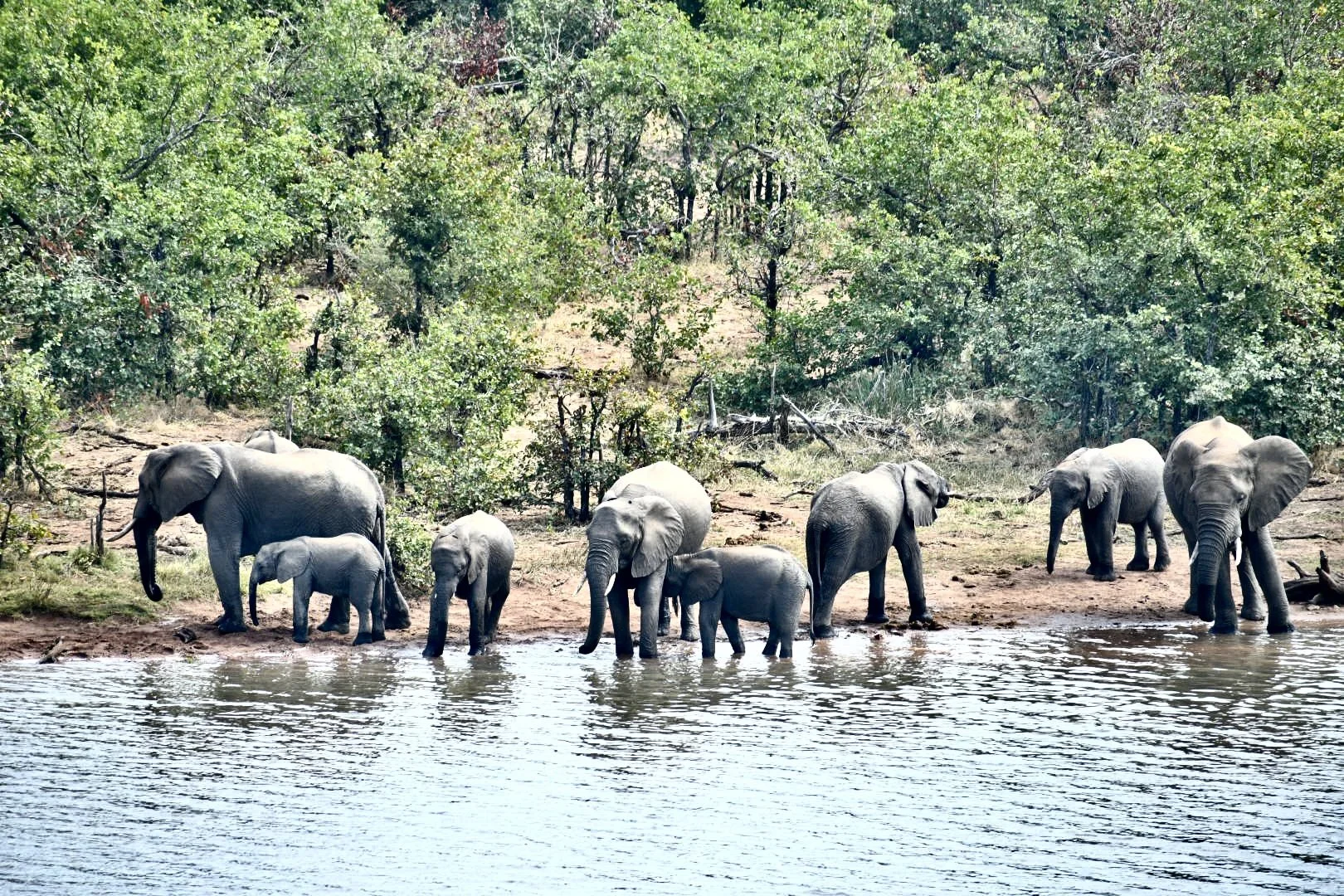7. More Kruger National Park
[NOTE: All of these Africa trip blogs are from my perspective and point of view. The others who were part of our journey no doubt have different thoughts about our travels.]
Almost everything about Kruger Park is difficult to describe to someone who has never been there.
The camps are laid out in beautiful but quite institutional ways. The buildings are all cream colored with brown or green trim and the camps are all dirt other than the little paved roads in the camp itself. The dirt is kept immaculate and pristine, however, with everything swept and maintained. The dirt looks manicured and does not even have rocks or pebbles. The setting is very natural, and all of the trees have been left the way they were when the camp was built. Though no dangerous animals are in the camps, small antelope and monkeys and baboons are a fairly common sight.
We spent the first couple of days at Letaba, which is a rest camp 51 km from the gate at which we entered and is almost due east of the Phalaborwa gate.
I chose this camp for a couple of reasons, one of which was Letaba is strategically located in an area that usually has many elephant sightings.
I also chose Letaba because it houses one of the most magnificent elephant displays anywhere. It tells the story of elephants along with the history of many spectacular elephants that once roamed KNP. Some died of natural causes while others were poached over the years. Poaching remains a major problem with Kruger as will all game parks in Africa and elsewhere. It is a truly wonderful display that is world class. It is housed in a large building and has the tusks of many renowned elephants, embryos at varied stages, and a skull and tusk recovered after an epic battle between two big bull elephants.
Letaba lived up to its reputation and during our drives around this camp and to its north and south, we encountered many elephants and other game, both commonplace and rare. The terrain around Letaba is grassland with many species of trees.
